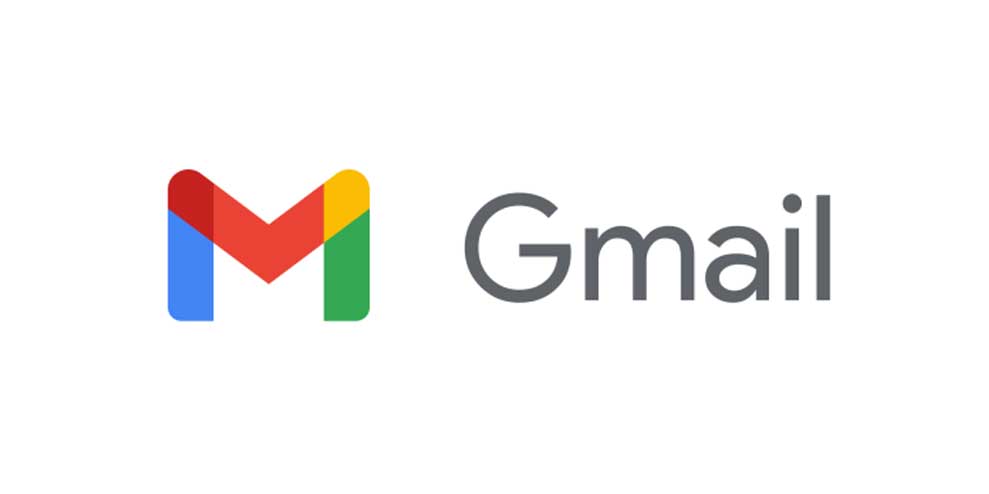Google’s productivity apps have a new name: Google Workspace. But there’s far more to this latest pivot than the death of the iconic Gmail envelope.
Let’s get one thing out of the way right off the bat: Google’s habit of repositioning products has become a bit of a punchline. From the seemingly endless cycle of shifting messaging service strategies to the recent branding 360 with the Google TV–Android TV–Google TV again saga, the company has a slight reputation for failing to commit to any particular concept for long.
Sometimes, though, a new beginning makes sense. Sometimes, a product’s evolution seems appropriate. And sometimes, despite the well-warranted inclination to sigh at the notion of Yet Another Google Name Change, the reason for a rebranding actually resonates—and feels like a step in the right direction.
That’s certainly the case with Google Workspace, a new identity Google is rolling out for the entity formerly known as G Suite (which itself was formerly known as both Google Apps and Google Apps for Your Domain) this week. Workspace is, on the surface, an updated name and brand for Google’s collection of productivity apps—Gmail, Docs, Calendar, Drive, and so on. The rebrand is more than just a new name: It also includes some significant changes both in function and in appearance. That means that all these apps’ logos are getting a big makeover—so get ready to say so long to the iconic Gmail envelope.
“This is the moment in which we break free from defining the structure and the role of our offerings in terms that were invented by somebody else in a very different era,” says Javier Soltero, Google’s vice president and general manager of G Suite and now Workspace.
So if it isn’t just a new name, what is it? Well, it’s complicated. Workspace isn’t exactly a new service, in and of itself. It’s more of a new mindset—a connective tissue that reimagines how Google’s productivity apps exist and reshapes them as more than just vaguely related individual pieces.
“The space in between those apps becomes really important,” Soltero says. “That’s where improvement happens, [and]that’s where innovation happens—the blending between an editing or content creation tool and a communication tool.”
We got a taste of that blending in July, when Google announced an update to Gmail that brought elements of Meet, Chat, and even Docs into the inbox environment. That, as it turns out, was just an appetizer for what was to come—the way Google intends to bring all of its productivity services together and make them feel like a single, connected experience, with a more consistent visual identity and overlapping elements that extend from one app to the next. That’s what Google Workspace is ultimately all about, and its effects will reach practically every Google productivity app, both for paying business subscribers and eventually for regular consumer users, too.
A NEW KIND OF CONNECTION
If you’re feeling anxious about having to adjust to a whole new interface or way of working, take a deep breath: Workspace isn’t going to involve the end of any existing Google services—or even that many changes to the individual apps’ interfaces.
Instead, it’ll little by little make all of those apps work together in more logical and efficient ways. In Docs, Sheets, and Slides, for instance, you’ll be able to pull up picture-in-picture Google Meet boxes in order to communicate face to face with colleagues while working on a project. In Google Chat, you’ll be able to paste in a document, spreadsheet, or presentation and then work on it in real time, collaboratively, right in that window—without having to open up the full associated app.
But the standalone apps will all continue to exist as well. Google sees Workspace as more of a unifying umbrella and an option for getting things done in different ways as opposed to any sort of replacement for the tried-and-true tools we already know.“The individual apps serve as expressions of Workspace capabilities . . . but they also need to be individually awesome,” Soltero says. “They all serve as doors into the same house. Those doors need to still work.”
In a sense, it feels slightly reminiscent of what Google sought to do, at least conceptually, with Google+ nearly a decade ago. Google+ also attempted to create a connective layer across numerous Google products and make those individual pieces feel like part of a cohesive whole. The key difference is that the Google+ core was an entirely new service and something plenty of people weren’t interested in using. With Workspace, Google is bringing together existing services and simply making them play together more effectively.
And that, suffice it to say, presented the company with quite the design challenge—figuring out how to take all these services that have long been treated as their own individual entities and make them feel like part of the same puzzle, all without losing their own unique and often beloved identities.
THE WORKSPACE DESIGN STORY
Margaret Cyphers knows the difficulty of juggling endless tasks while bouncing between browser tabs. Cyphers is a creative director at Google, and like many office workers, she’s spent most of this year interacting with her colleagues from afar, with everyone at home and relying exclusively on web services for communication and collaboration. Unlike most folks in that situation, though, Cyphers’s job has been reinvigorating the designs of the very services she’s using.
“Life has changed, but also the way that people work has changed,” Cyphers says. “Everybody’s feeling that.”
To reflect that transition and the evolving role these services now play, Cyphers and her colleagues created an entire new set of icons and images—not only for Workspace itself but also for the individual apps that are a part of it. That meant, perhaps most dauntingly, finding a way to breathe new life into an iconic logo that’s remained mostly untouched since its arrival. Yes, we’re talking about Gmail.
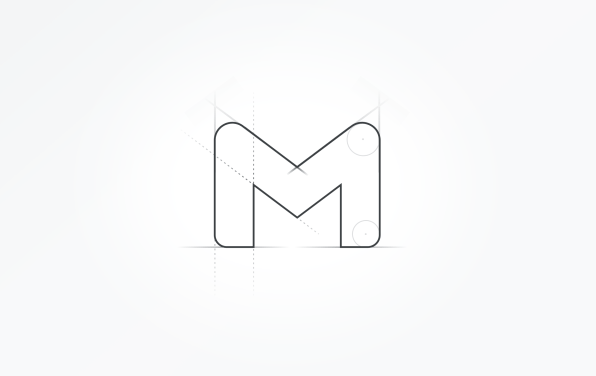
“It’s a hard balance, for sure,” Cyphers says of the need to maintain the identity people know while also making the logo feel new and current. “When you have strong brand equity, that’s something you have to be very respectful of and cautious [about].”Cyphers’s team relied on regular user testing and feedback to guide their decisions. They toyed with losing the trademark Gmail “M” at one point and even thought about moving away from the traditional Gmail red but found people reacted negatively to both of those changes. To their surprise, though, they discovered the logo’s long-standing envelope element wasn’t as critical to the design as they had anticipated.
Armed with that assurance, the result they landed on was something that’s still immediately recognizable as being Gmail but also much more contemporary and in line with current Google design standards. It brings in the full array of Google colors while continuing to lean heavily on that telltale red, and it’s meant to evoke a sense of movement and connected pieces—just like what Workspace itself is designed to do.
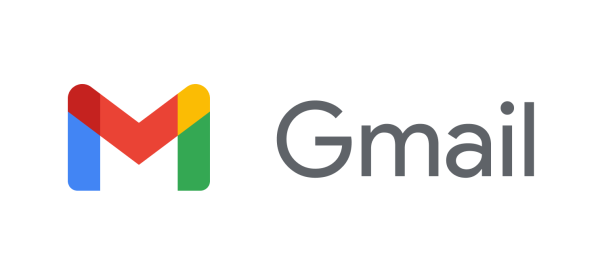
“We’re not trying to move away from being Gmail. That’s critical,” Cyphers says. “Where we landed, yeah, it feels different and fresh and more modern, but I can still tell it’s Gmail.”Those same concepts of movement and connectivity carry through to the other new Workspace logos—for Drive, Calendar, and other such services. The logos all have three-dimensional, moving versions where the idea of interlocked pieces becomes even more apparent.
All in all, it represents quite the visual transformation—even if the apps’ actual interfaces are mostly unchanged.
And it doesn’t end with icons, either. Google also created a whole new set of imagery for experiences within the Workspace apps, sometimes relying on a technique called photo-illustration in which actual three-dimensional props were used to bring a lightness and quirkiness into the products’ visuals—an effect you can see in icons such as this one, which represents a new chat room within Google Chat and looks like something you could reach out and grab:
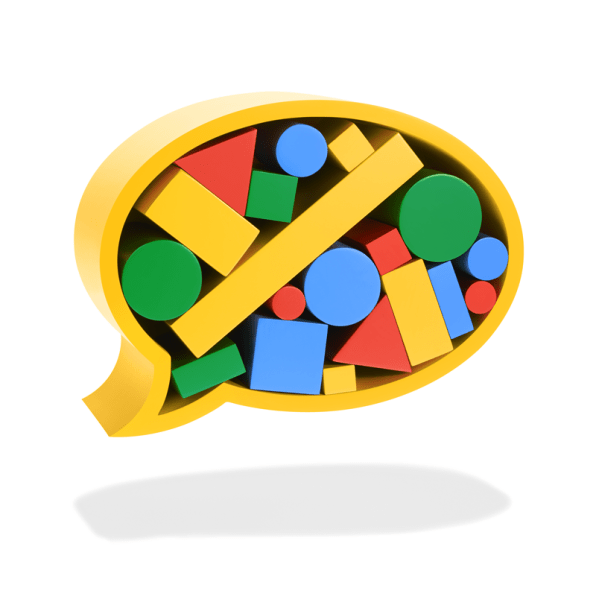
That same technique was applied for a series of new avatars—Roomatars, as they’ll be called—that’ll soon appear within Chat as well as in Gmail and other Workspace services.
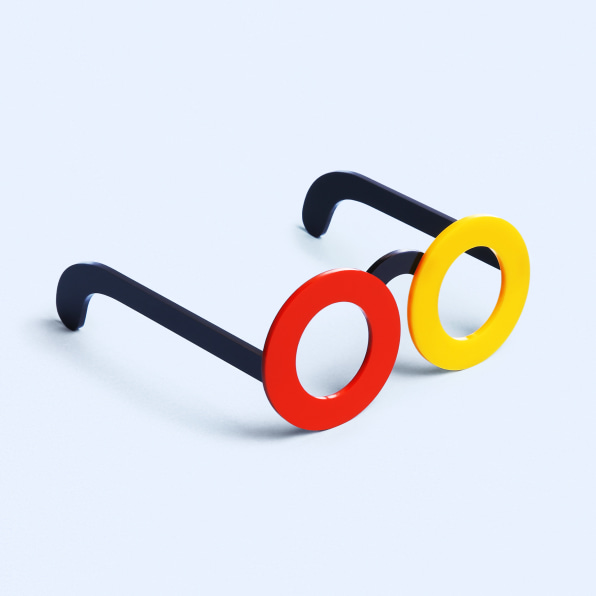
“Each one of these takes days and days and if you add in all the production time, you’re looking at a situation that we hope shows that high touch, high craft, and how you can insert little bits of delight throughout all of the products,” Cyphers says.
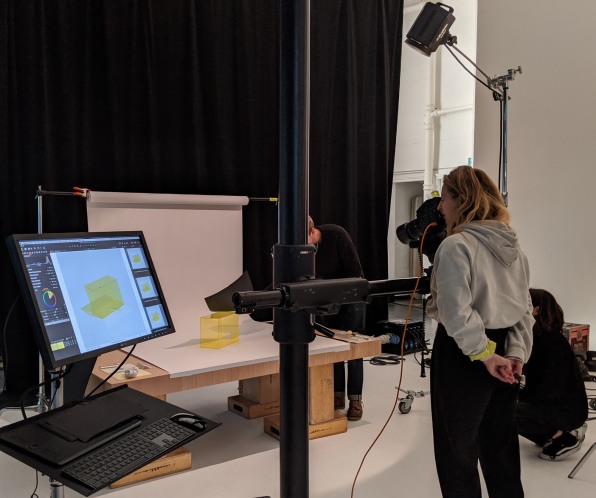
LOOKING TO THE FUTURE
All of this is debuting at a painfully unusual time—a time when “going into the office” often means walking into the other room of your house or apartment. But while this current reality of ours emphasized the need for better communication and collaboration tools, Google is confident what it’s creating with Workspace will feel every bit as relevant for the long haul.
“Work is no longer defined as a physical place, necessarily,” Soltero says. “What we’ve been able to prove over the last six months around the world is that you can run banks, governments, healthcare institutions, all kinds of businesses in a distributed fashion, and I think that leaves with it a lasting change.”
Soltero himself can relate. His entire Workspace leadership team—the three VP-level execs responsible for coordinating everything being announced this week—started at Google during the pandemic. He’s never met physically with any of them; they’ve worked together only virtually, and just like so many of us, they were forced to adapt to the circumstances around them.
“It was no longer something you could consider theoretically,” he says. “It quickly created almost a perfect storm, if you will, for the notion of transformation to actually take place.”
That notion of transformation—the feeling that Workspace isn’t just Yet Another Google Name Change and is instead a sensible expansion and evolution—may be why this pivot seems different from the typical Google branding flip-flop. Workspace is being positioned as a new beginning for a new era of working. And if there were ever a time for such an introduction to make sense, 2020 is most certainly it.
This article first appeared in www.fastcompany.com
Seeking to build and grow your brand using the force of consumer insight, strategic foresight, creative disruption and technology prowess? Talk to us at +971 50 6254340 or mail: engage@groupisd.com or visit www.groupisd.com/story

